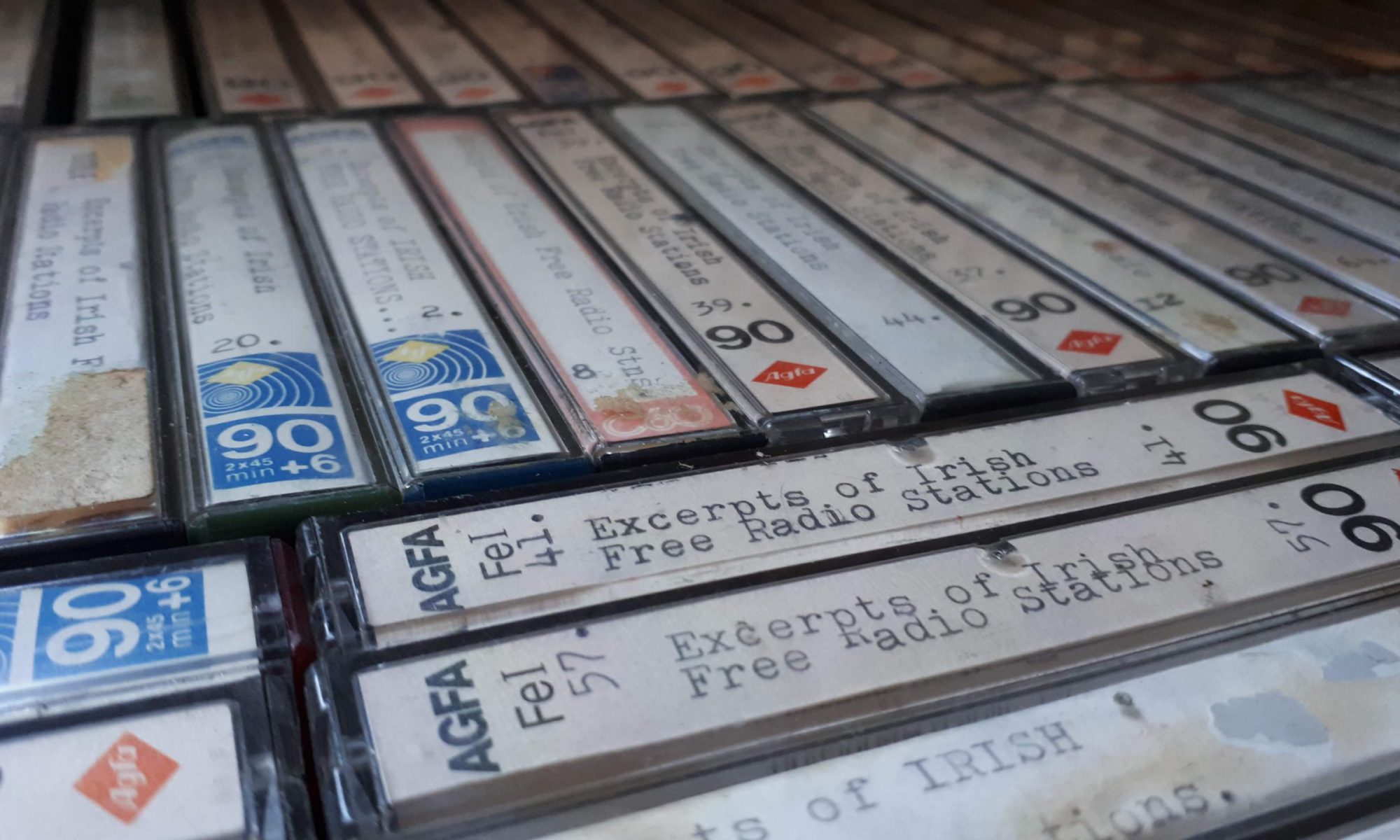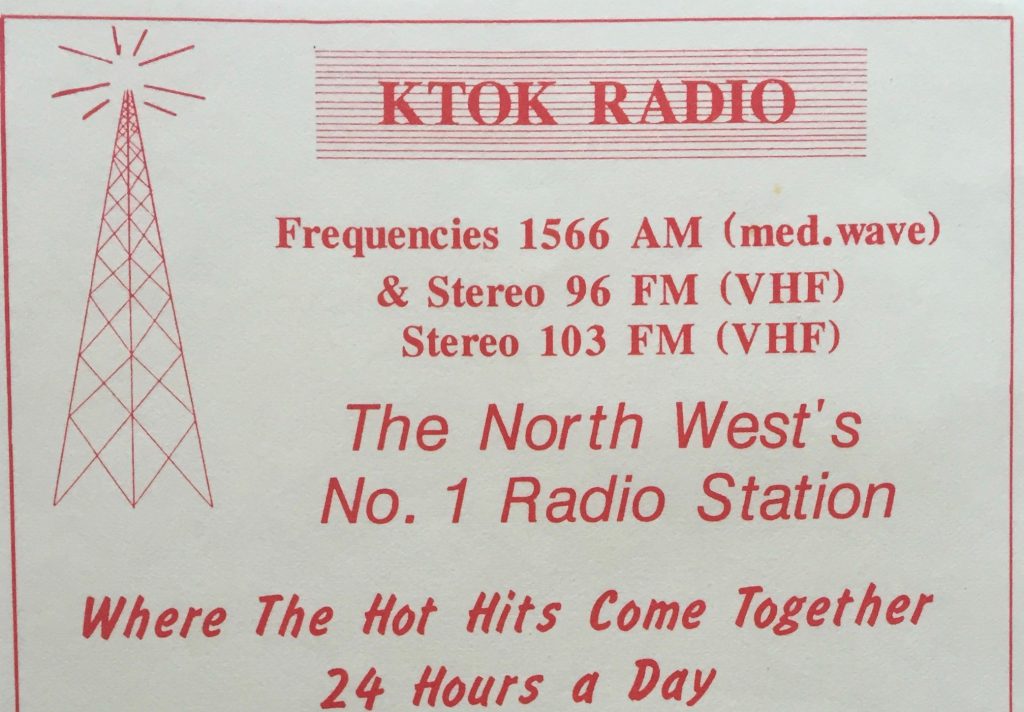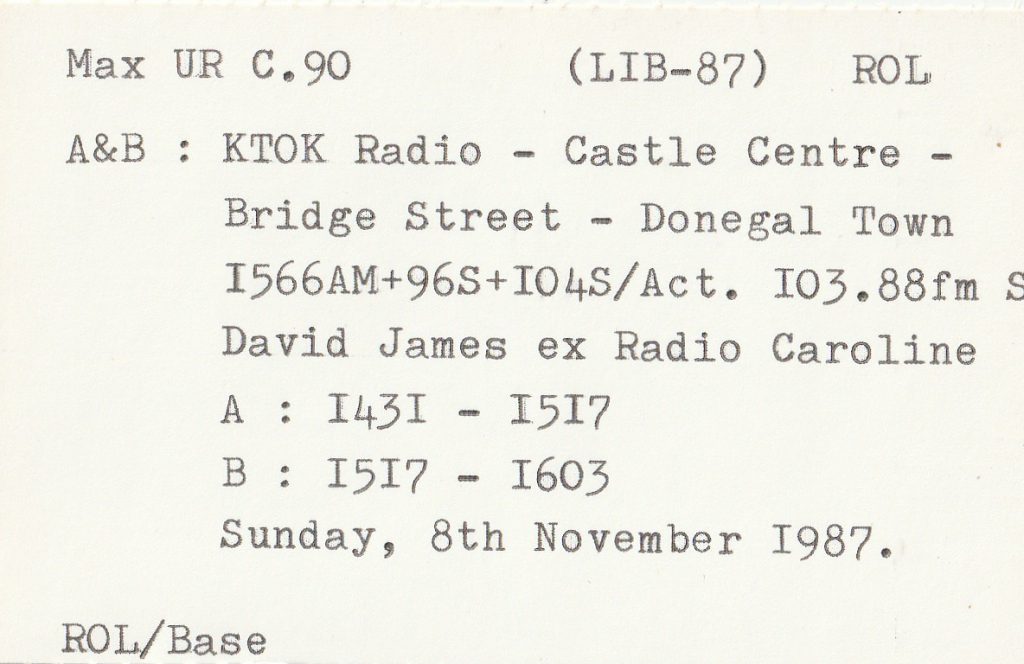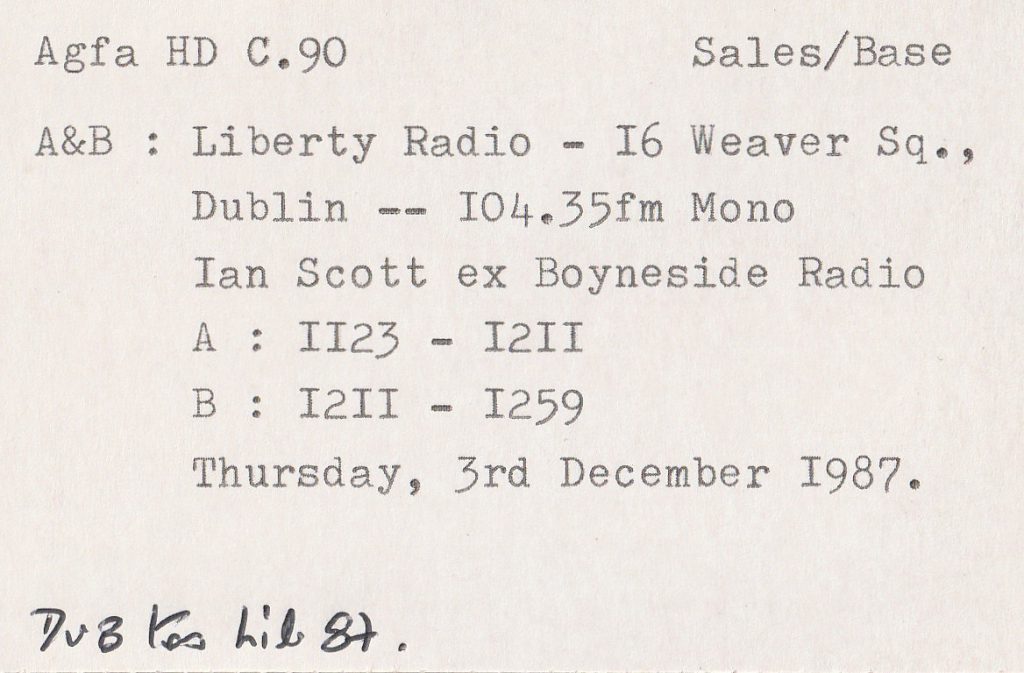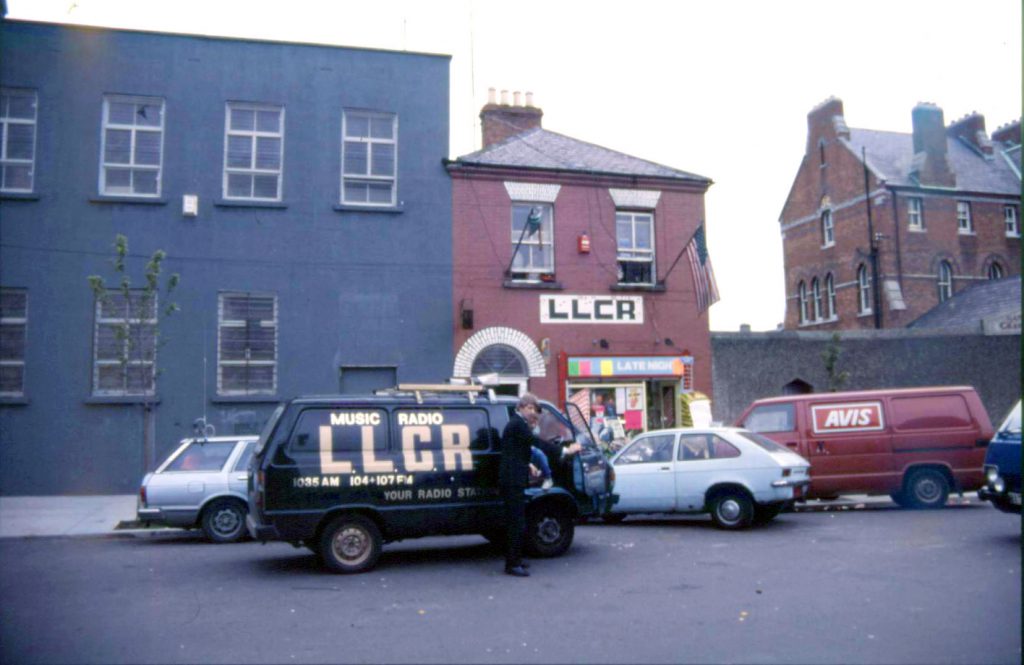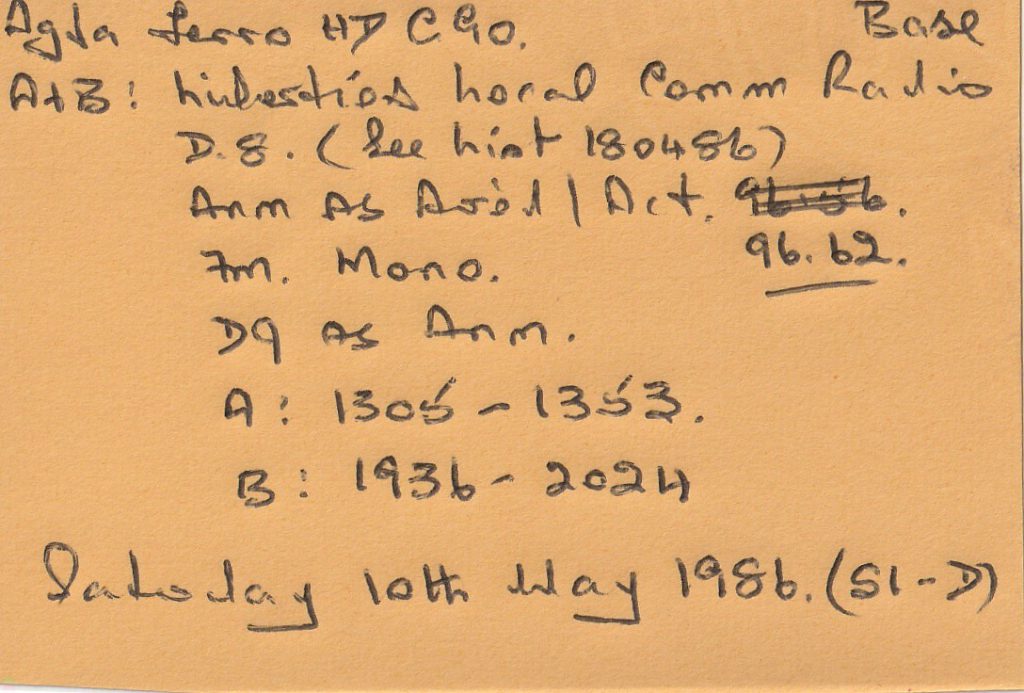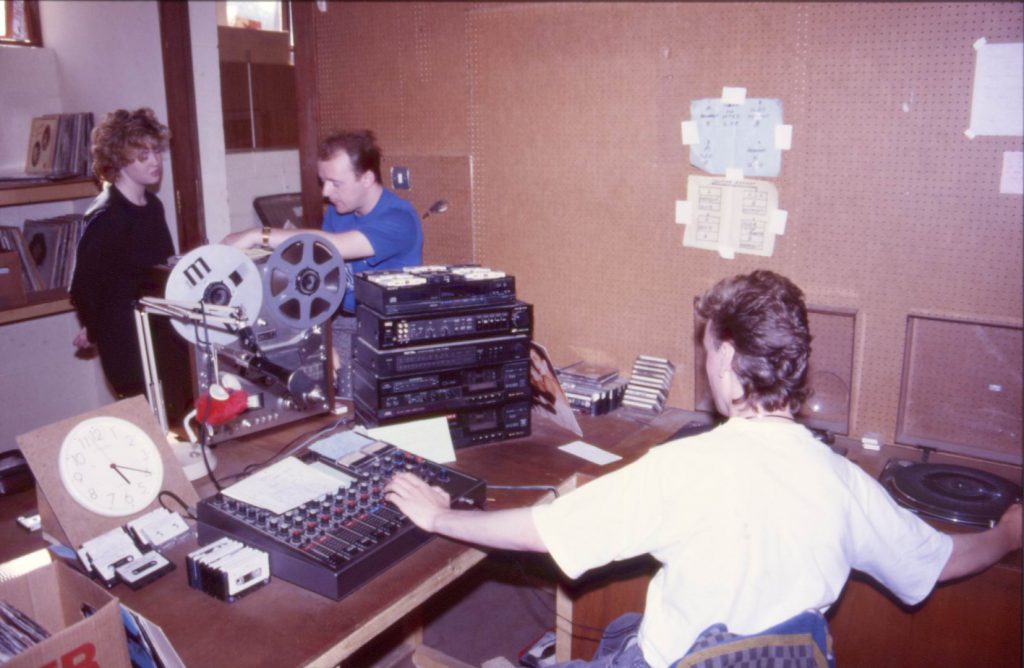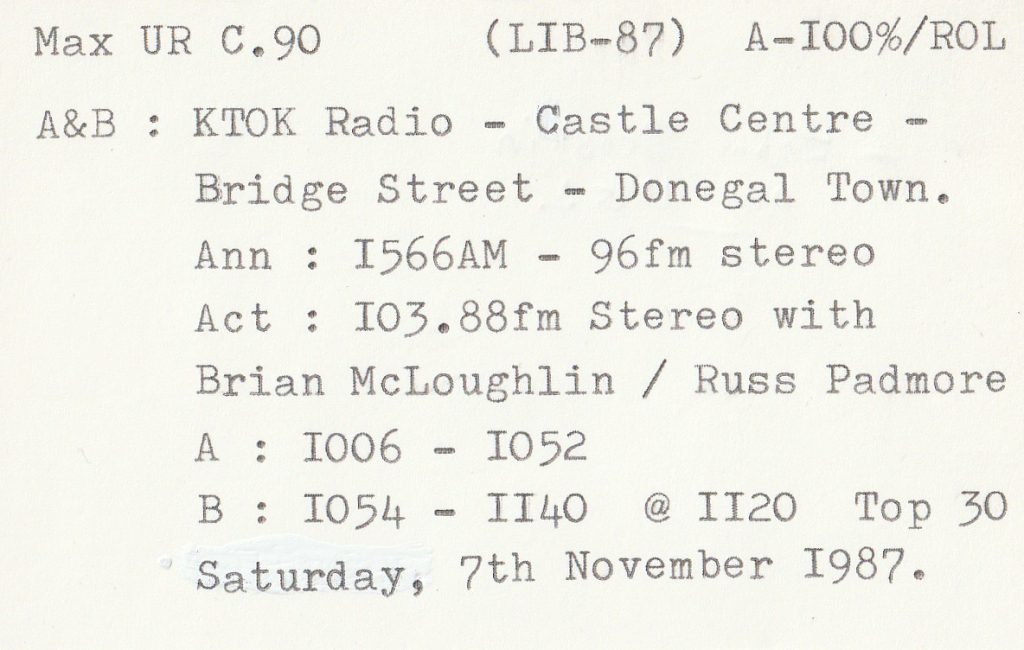Podcast: Play in new window | Download
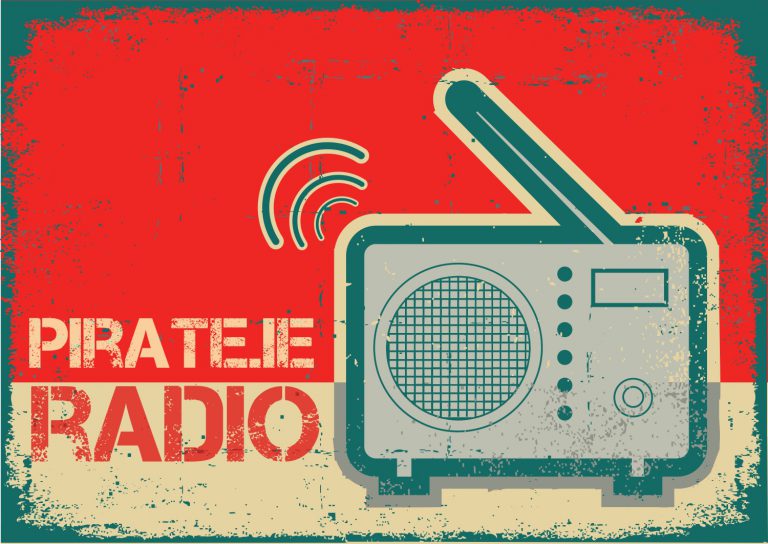
Echo Community Radio was one of several small Dublin stations that came and went during the 1980s. It broadcast from Blanchardstown in west Dublin and was first logged by DX Archive in July 1985. The station broadcast on AM only initially and was located in the Centrepoint Shopping Centre. According to Anoraks UK Weekly Report, it closed down by January 1986. There is no known connection to the earlier Echo Radio based in Clontarf in 1982.
This recording of Echo Community Radio features DJ Lee, a familiar voice from the 1980s pirates, presenting an afternoon slot. There’s a listeners’ competition for cinema tickets but tellingly, no adverts are heard over 90 minutes of primetime radio listening. The station claimed to broadcast to the Greater Dublin Area but clearly power was low as there is co-channel intereference, likely from Radio Carousel North on the same frequency of 1071 kHz (announced by Echo as 280 metres).
The tape was made from 1555-1737 on Wednesday 26th June 1985 and is from the Anoraks Ireland Tapes Collection.
